This section describes how to configure a network function in LLS-C3 mode using system service.
Prerequisites
Create and Apply a Host Profile to a Cell Site Group.
Note:While creating the host profile, add a dedicated PCI Group for each vmnic you want to use for PTP (Server and Client).
Procedure
- Navigate to Catalog > Network Function in the Telco Cloud Automation UI.
- Select the Network Function you want to set up in LLS-C3 mode and click EDIT.
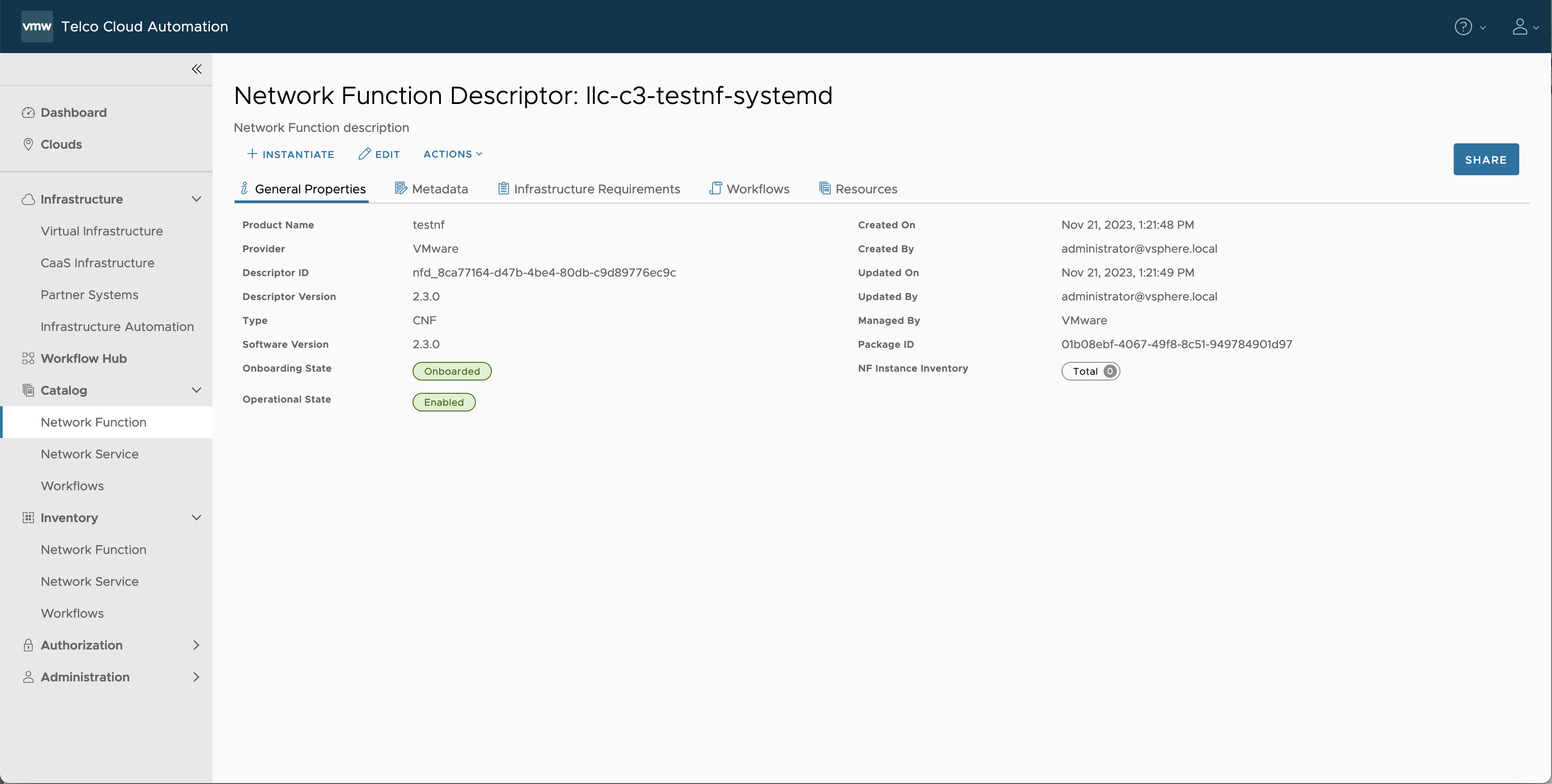
- Click the Infrastructure Requirements tab.
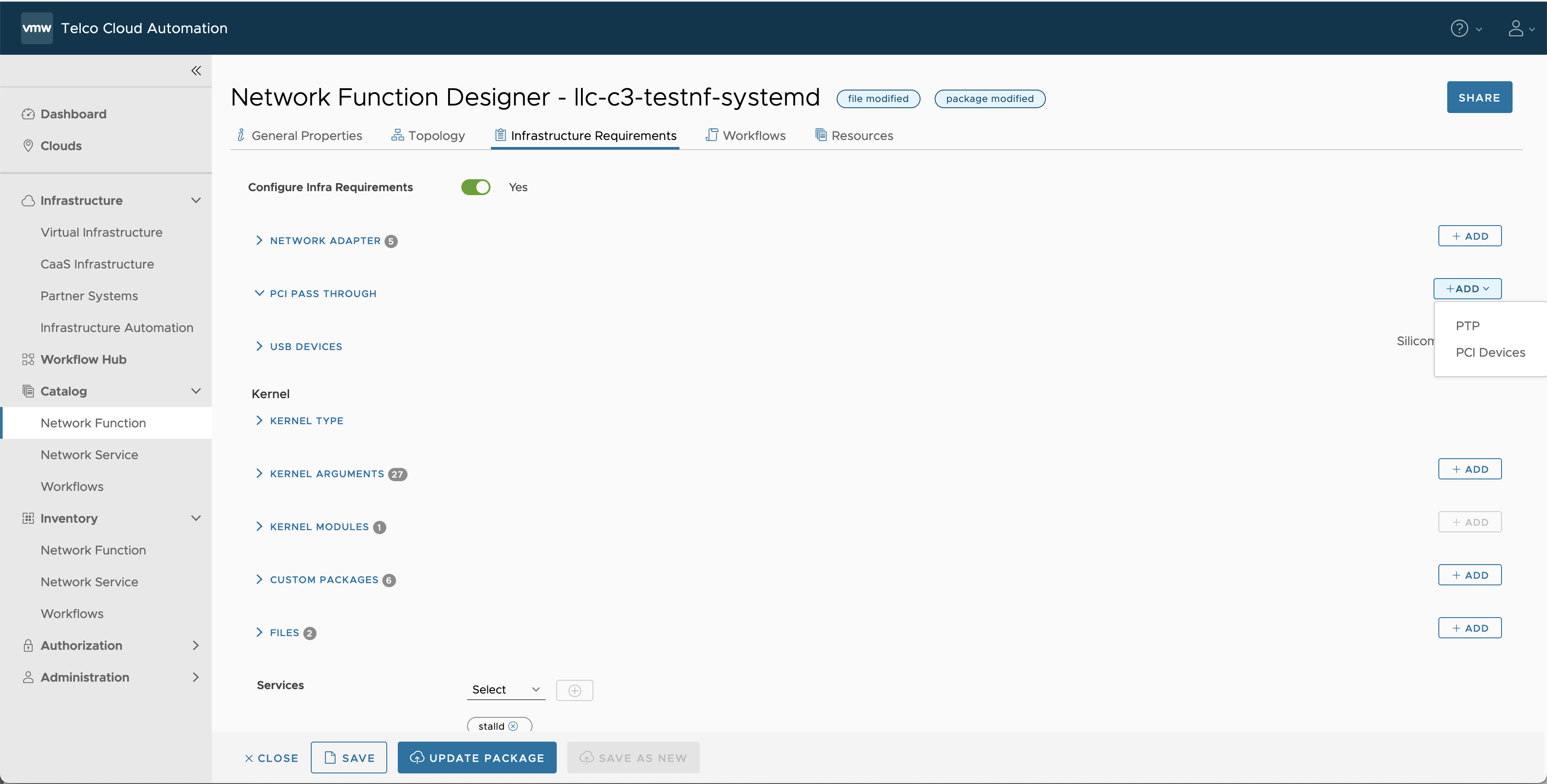
- Add PTP devices under PCI PASS THROUGH:
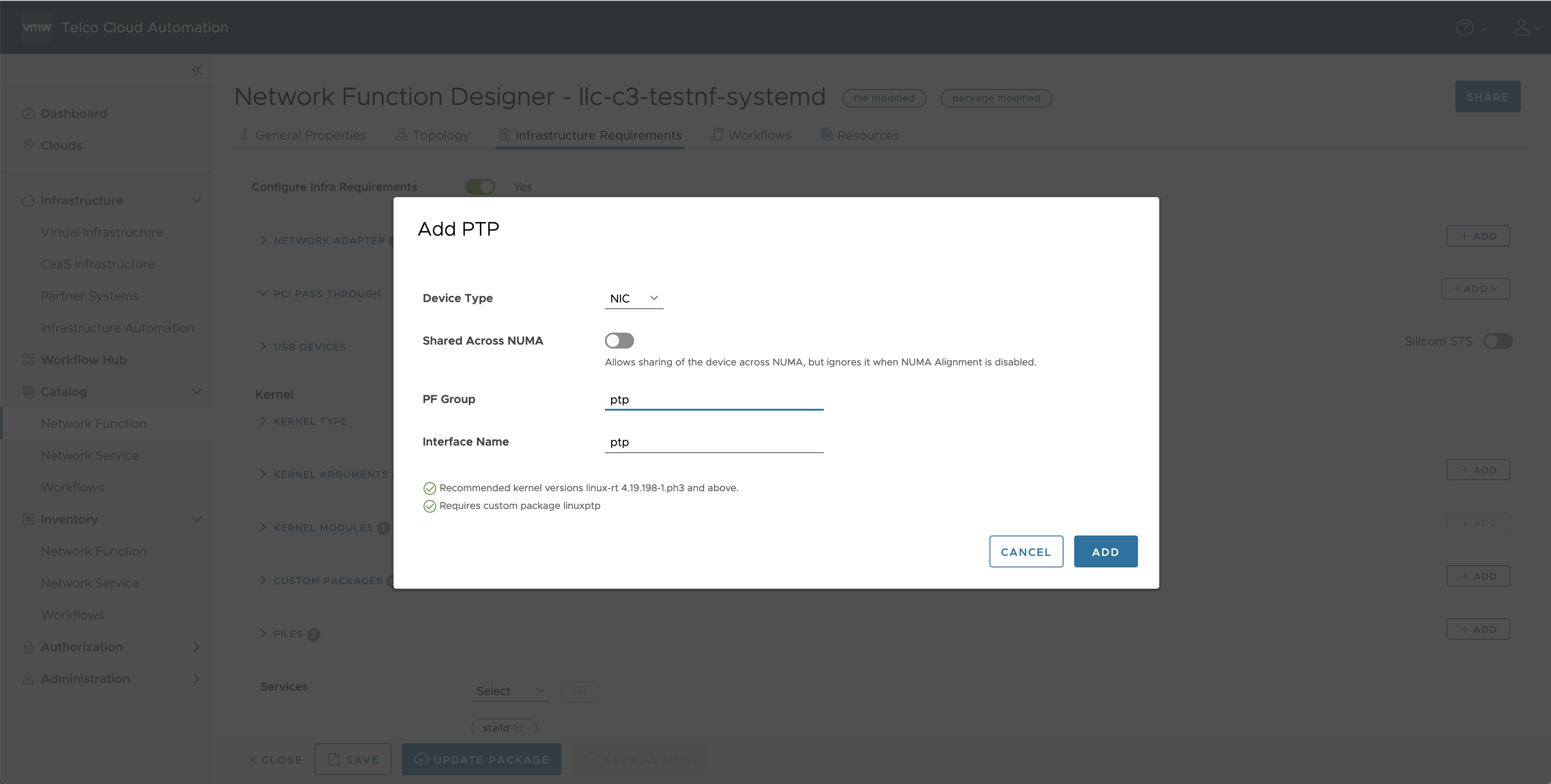
- Click ADD and select PTP from the drop-down list.
- In the Add PTP pop-up window, select PTP as the Device Type.
- Enable or disable Shared Across NUMA as required.
- Enter the name of the PF Group, the PCI Group that you created in the Host Profile. Example: ptp-h0915
- Enter the Interface Name you want to create for this PTP Device on the worker node. Example: ptp-h0915
Note: In case of LLS-C3, only one PTP device works in PTP Client mode, receiving PTP packets from Grandmaster/Switch.
- Click ADD.
- Repeat steps a-f for each PTP device you want to add.
Note: When you add one or more PTP Devices, an entry for 'linuxptp' gets created in the Custom Packages section. Modify the linuxptp version as required.
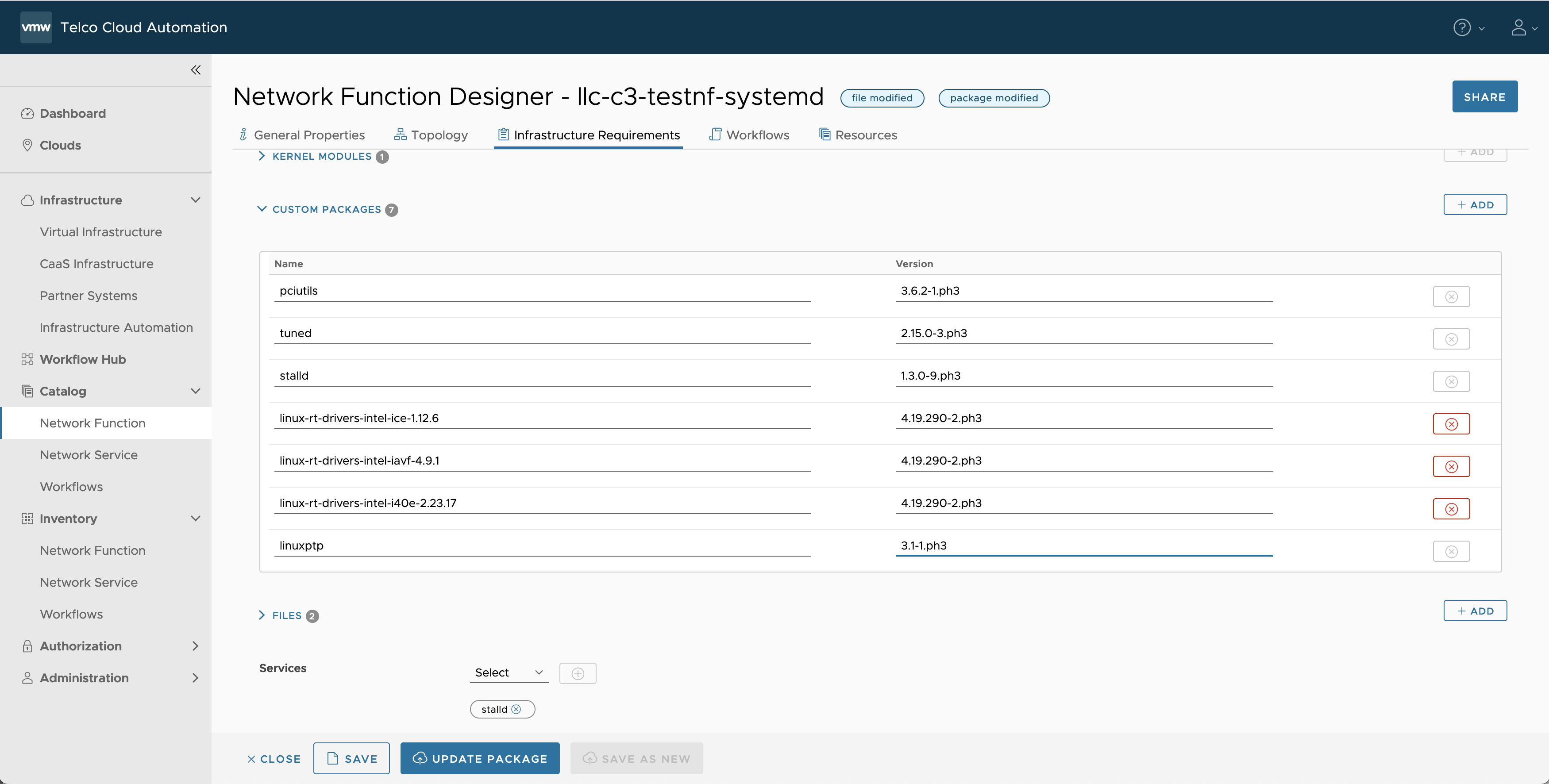
- Click the Resources tab.
- Expand the Artifacts > scripts directory.
Note: If the Artifacts > scripts directory does not exist, create it and then proceed.
- Add the following configuration files by clicking the + symbol next to 'scripts':
- phc2sys
OPTIONS="-a -r -m -R 16 -n 24 -z /var/run/ptp4l"
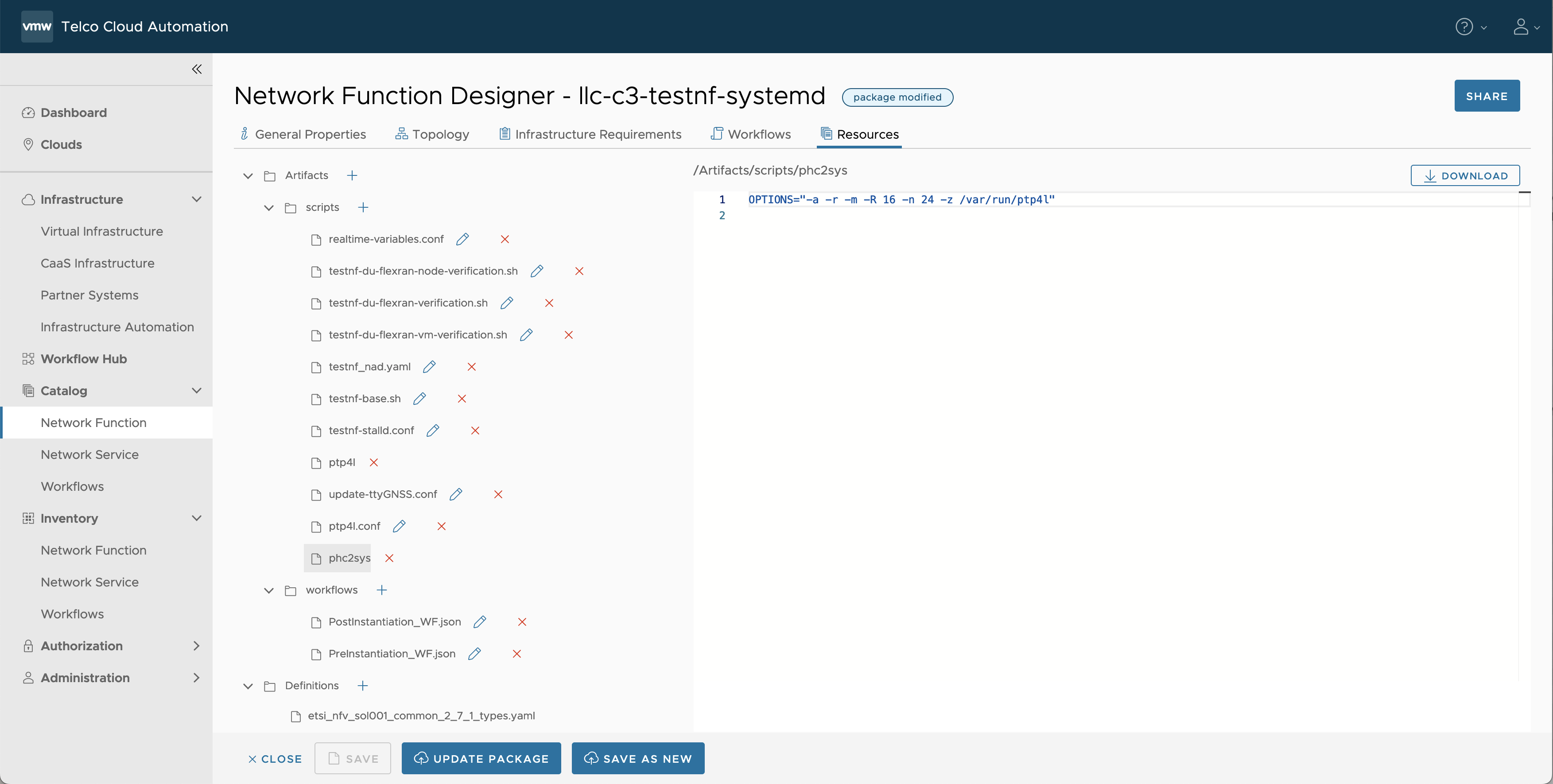
- ptp4l
OPTIONS="-f /etc/ptp4l.conf"
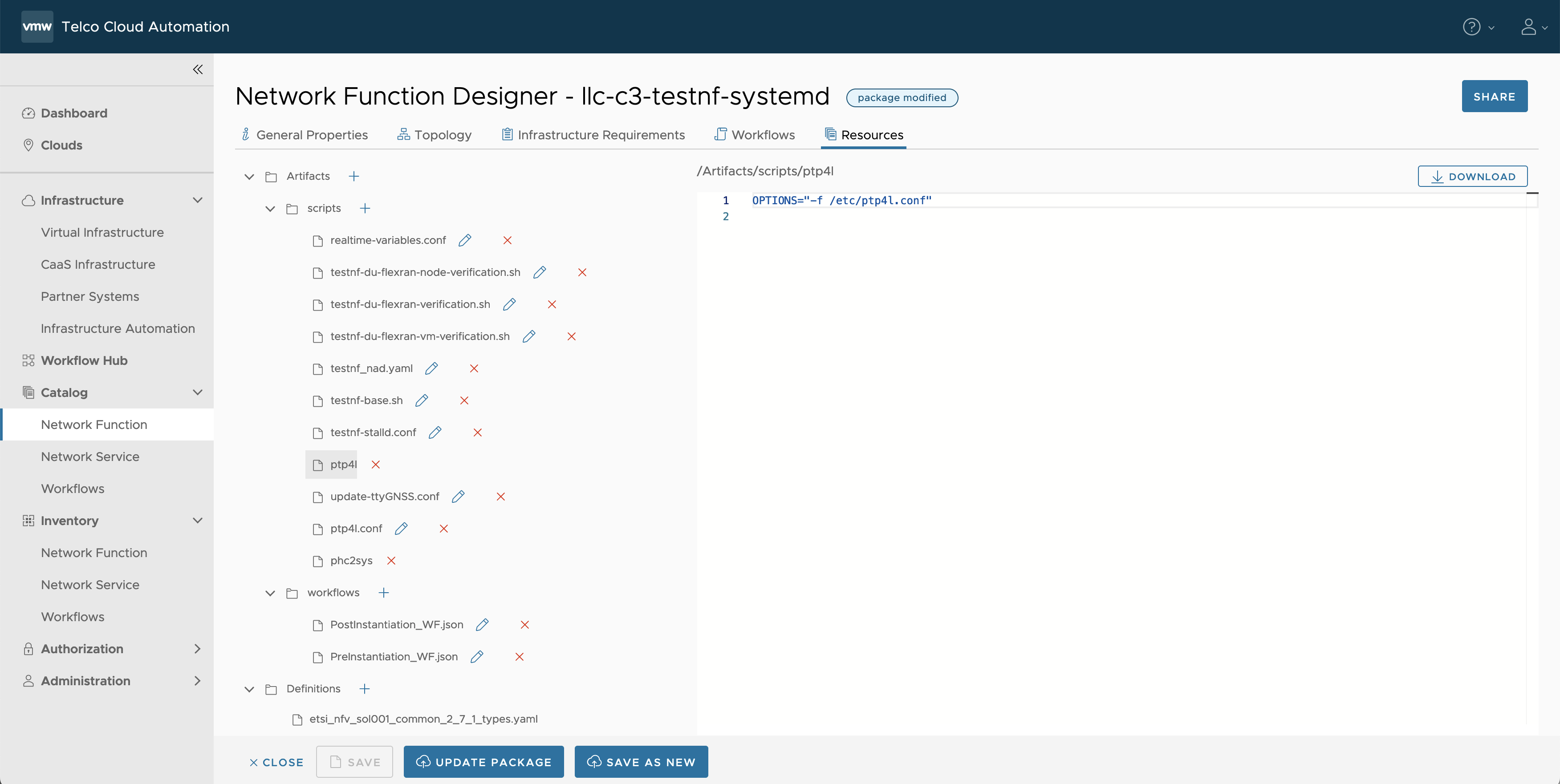
- ptp4l.conf
Note: This configuration file is valid for linuxptp version 4.0-2.ph3.
[global] # # Default Data Set # twoStepFlag 1 slaveOnly 1 priority1 128 priority2 128 clockClass 248 clockAccuracy 0xFE offsetScaledLogVariance 0xFFFF free_running 0 freq_est_interval 1 dscp_event 0 dscp_general 0 #dataset_comparison G.8275.x #G.8275.defaultDS.localPriority 128 #G.8275.portDS.localPriority 128 # # Port Data Set # logAnnounceInterval -3 logSyncInterval -4 logMinDelayReqInterval -4 logMinPdelayReqInterval 0 announceReceiptTimeout 3 syncReceiptTimeout 100 delayAsymmetry 0 fault_reset_interval ASAP #fault_reset_interval 4 neighborPropDelayThresh 20000000 # # Run time options # assume_two_step 0 logging_level 6 path_trace_enabled 0 follow_up_info 0 hybrid_e2e 0 tx_timestamp_timeout 300 use_syslog 1 verbose 0 summary_interval 0 kernel_leap 1 check_fup_sync 0 # # Servo Options # pi_proportional_const 0.0 pi_integral_const 0.0 pi_proportional_scale 0.0 pi_proportional_exponent -0.3 pi_proportional_norm_max 1 pi_integral_scale 0.5 pi_integral_exponent 1 pi_integral_norm_max 0.3 step_threshold 0.0 first_step_threshold 0.00002 max_frequency 900000000 clock_servo pi sanity_freq_limit 200000000 ntpshm_segment 0 # # Transport Options # transportSpecific 0x0 ptp_dst_mac 01:1B:19:00:00:00 p2p_dst_mac 01:80:C2:00:00:0E udp_ttl 1 udp6_scope 0x0E uds_address /var/run/ptp4l #uds_address /var/run/ptp4l # # Default Interface Options # # clock_type OC network_transport L2 delay_mechanism E2E time_stamping hardware tsproc_mode filter delay_filter moving_median delay_filter_length 50 egressLatency 0 ingressLatency 0 boundary_clock_jbod 0 # # Clock Description #productDescription ;; revisionData ;; manufacturerIdentity 00:00:00 userDescription ; timeSource 0xA0 domainNumber 24 [ptp]
Note: In the following ptp4l.conf file content, you can notice the interface name that you added in Step #4.
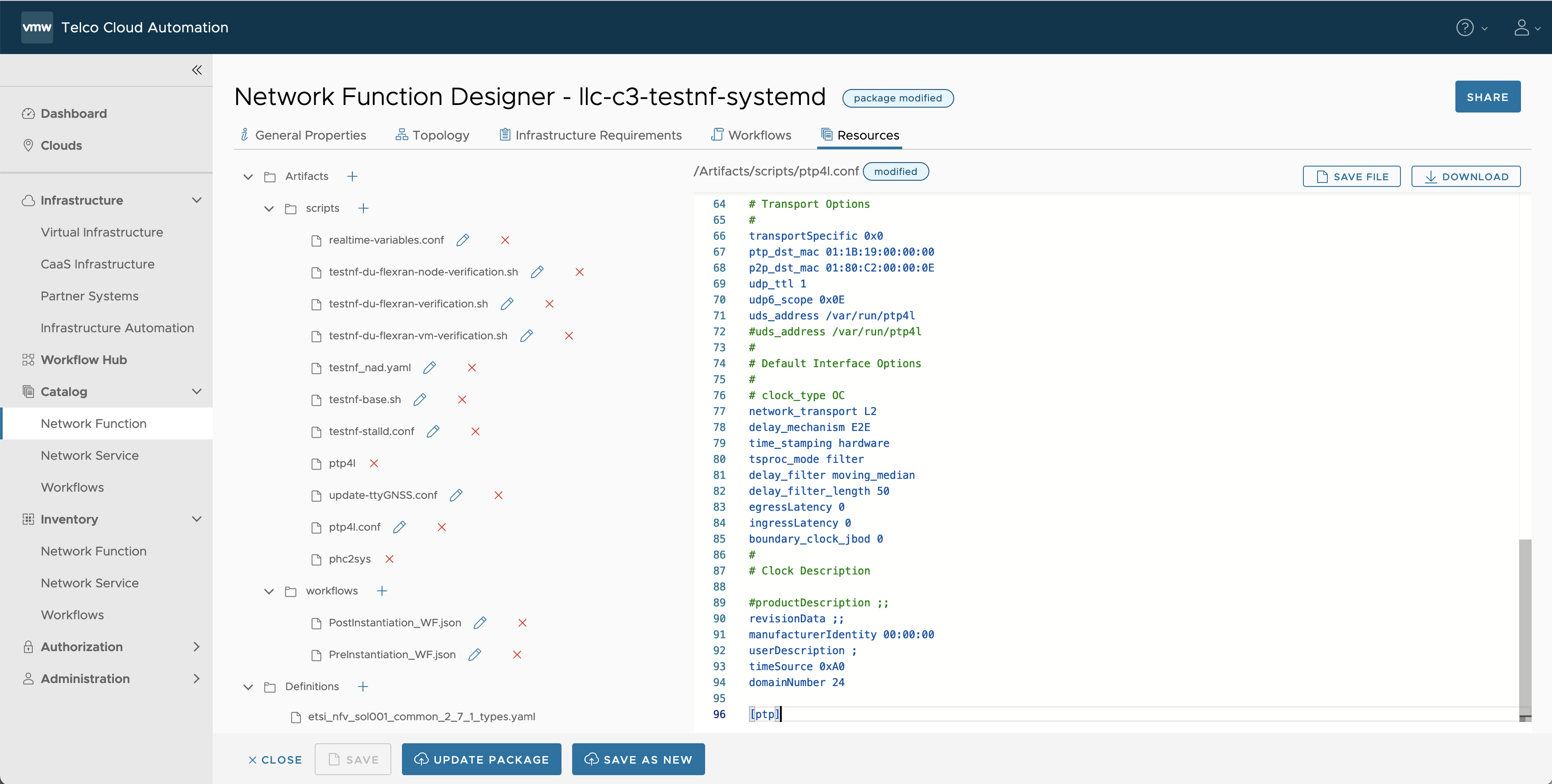
- phc2sys
- Save the network function CSAR by clicking SAVE.
- Click UPDATE PACKAGE or SAVE AS NEW as appropriate.
- Click CLOSE.
- Instantiate the network function.